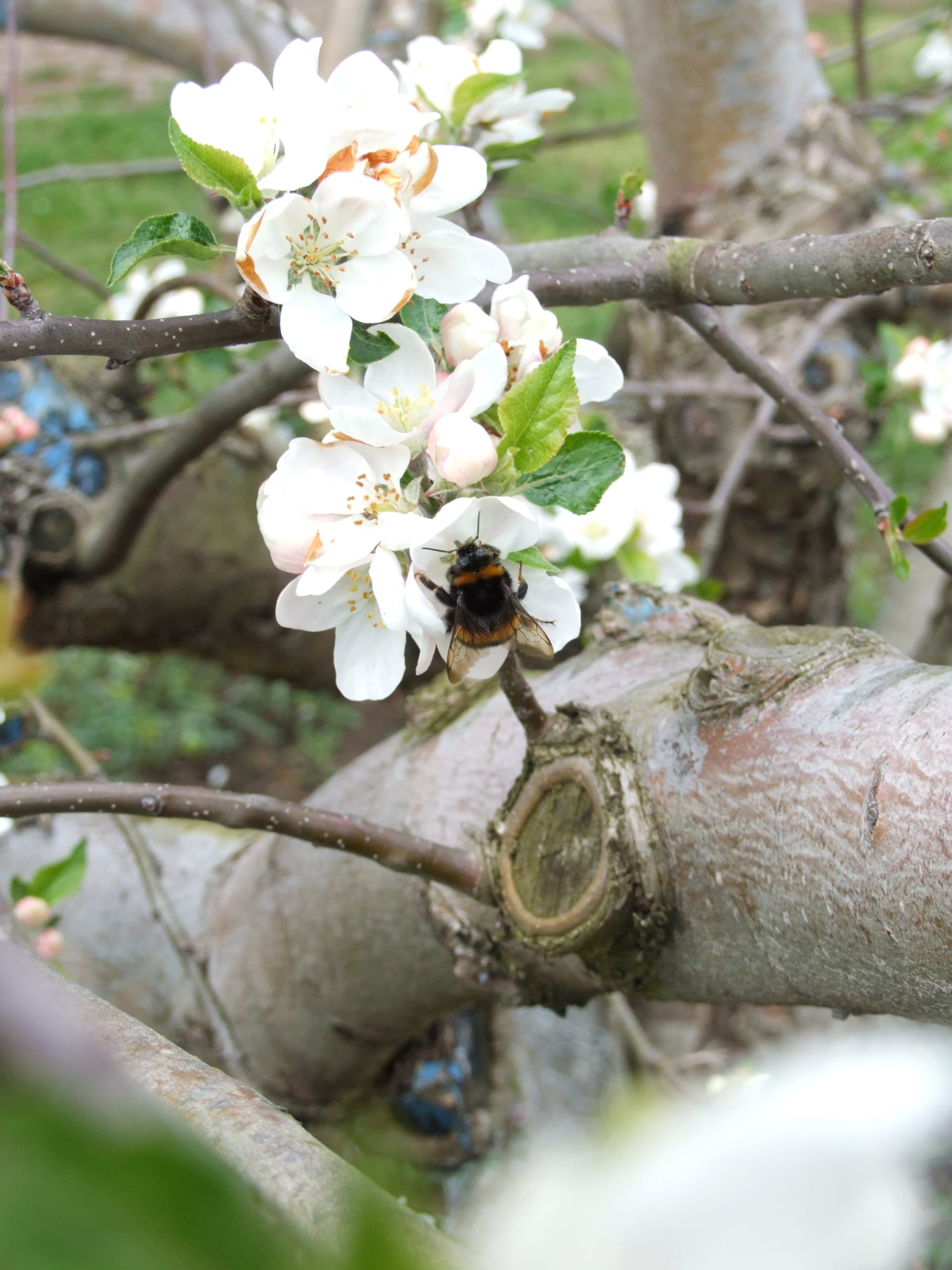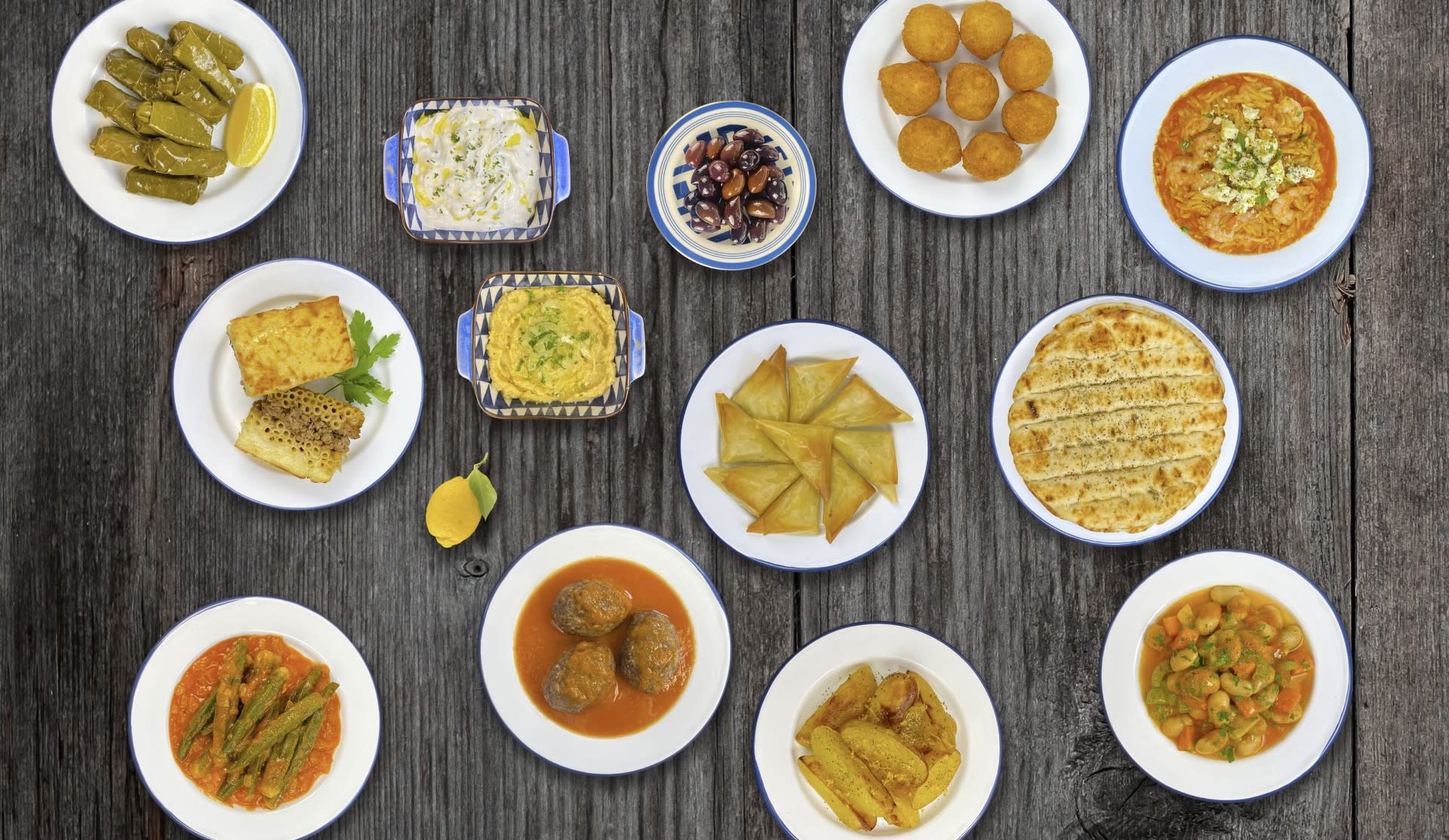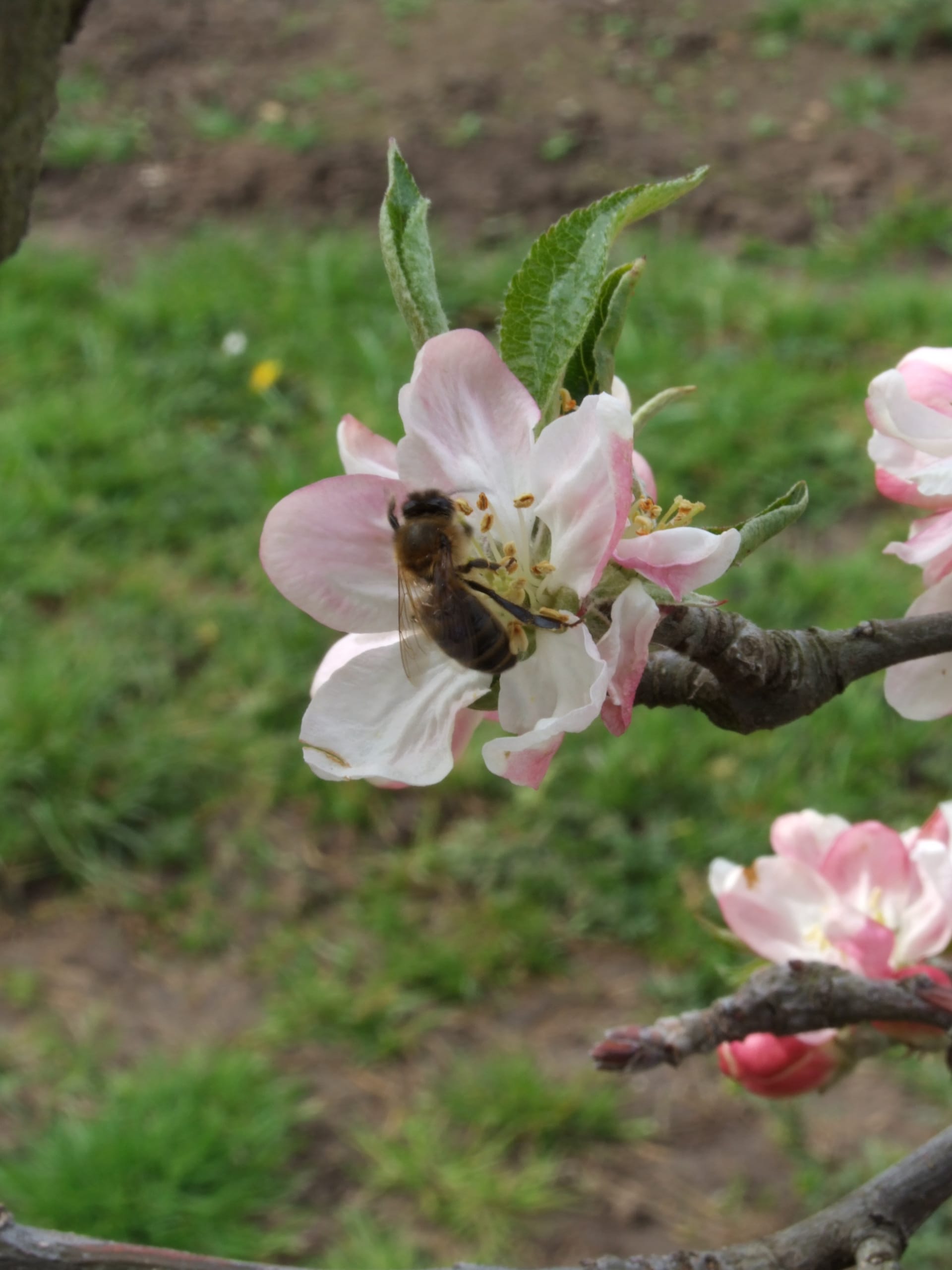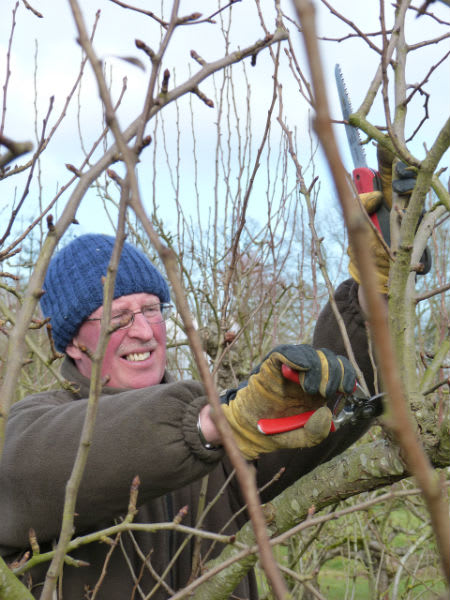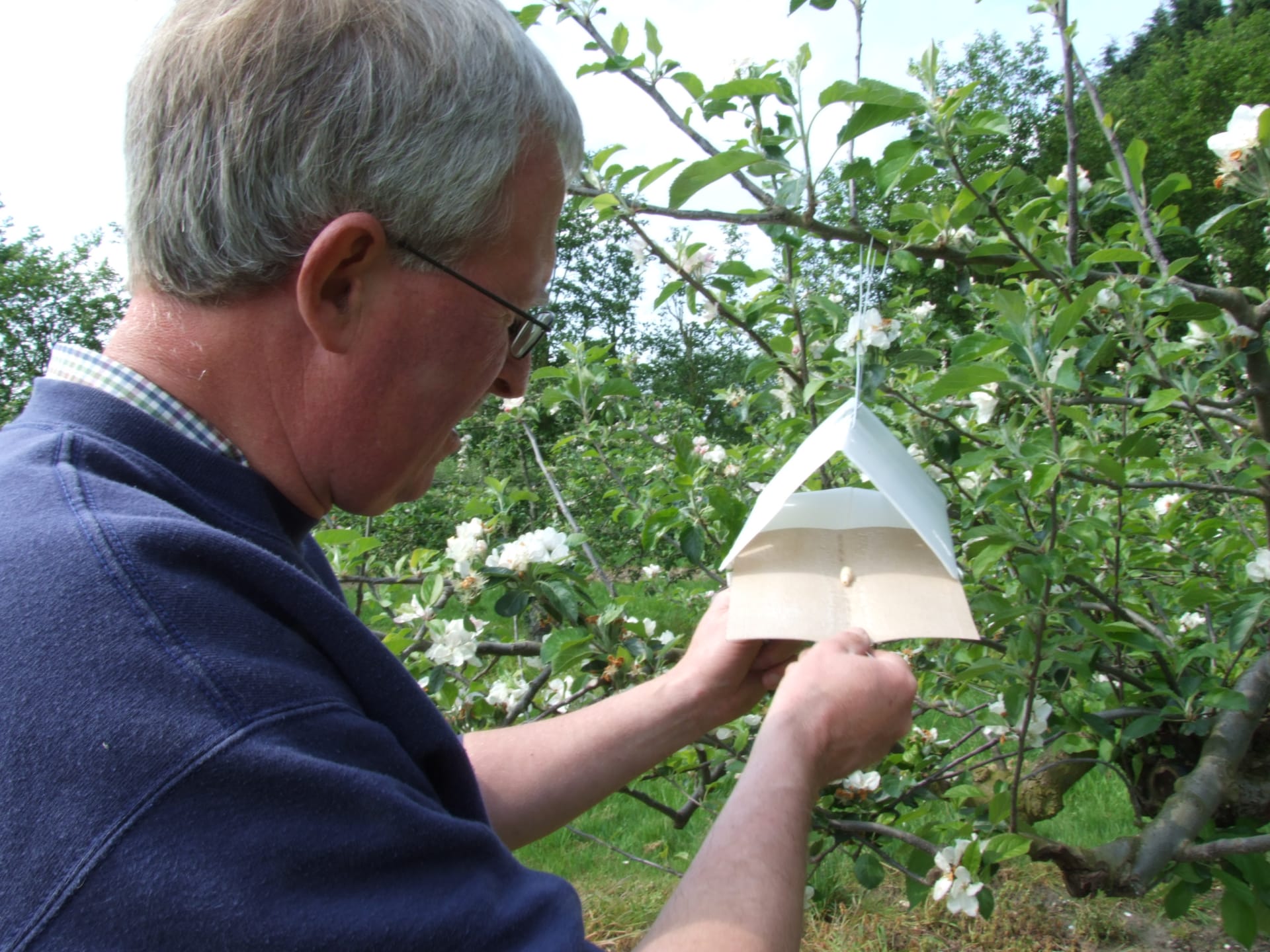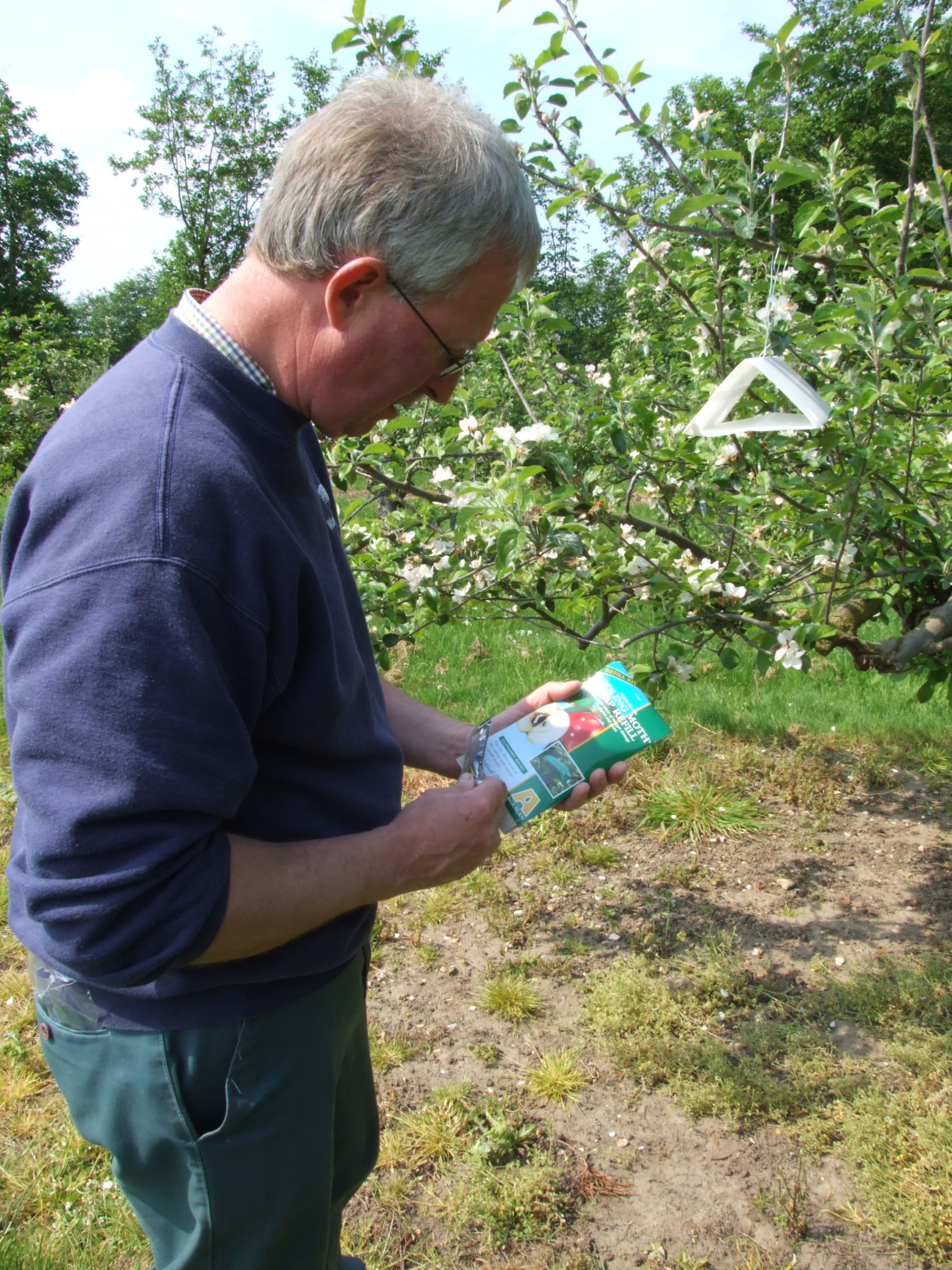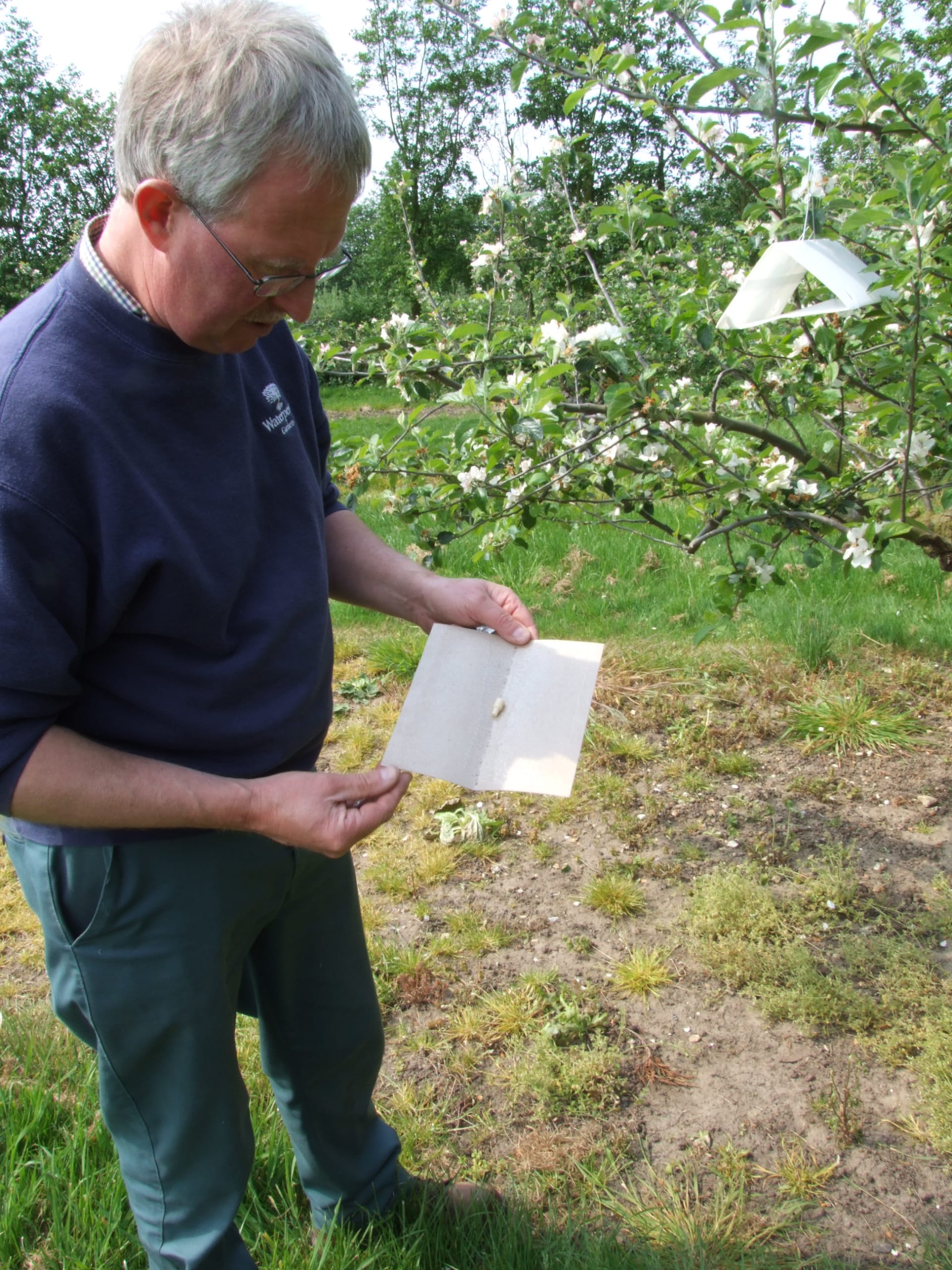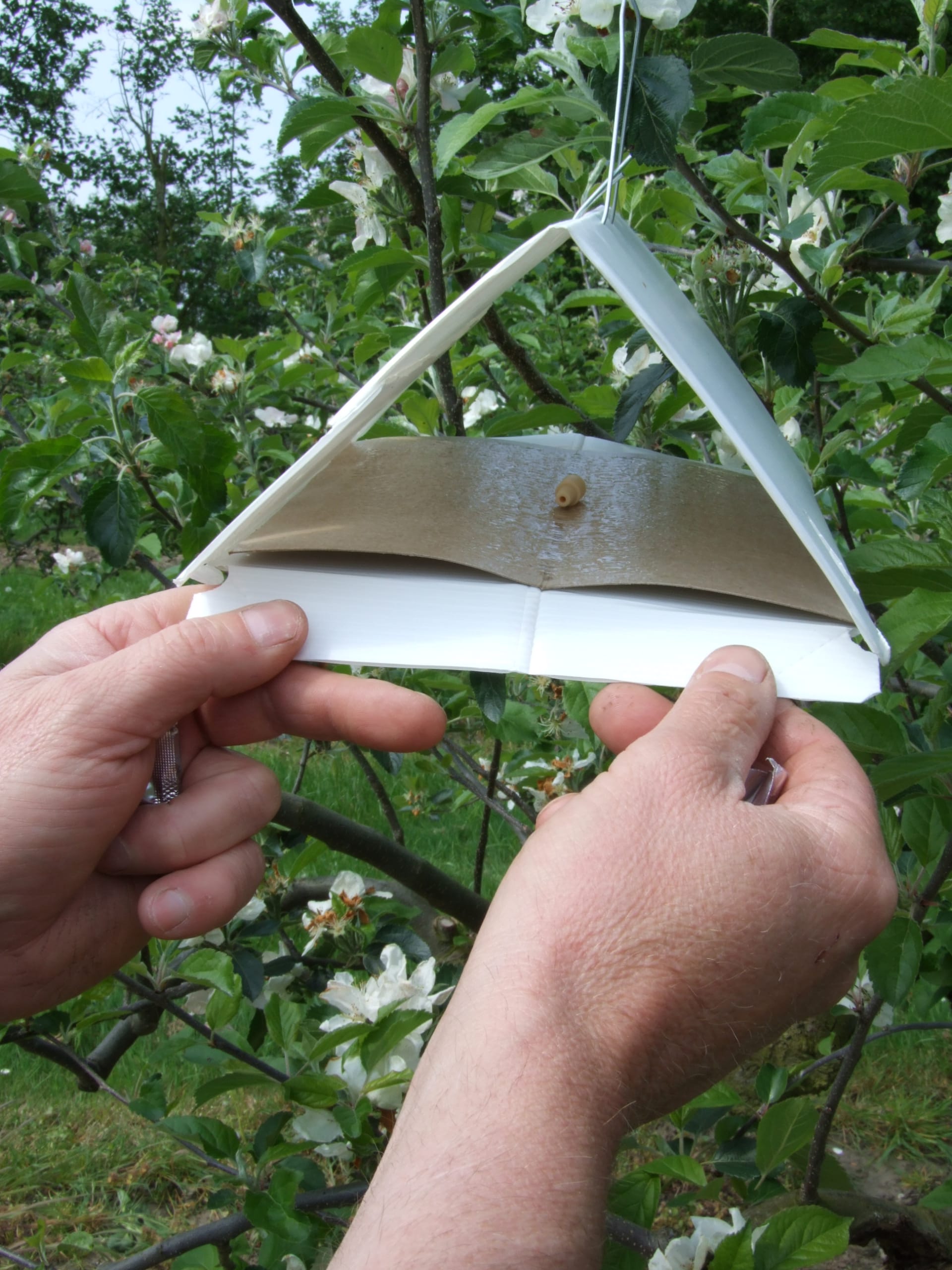As we head into autumn apples are beginning to ripen on the trees. Next month is Apple Month with specialist apple days/weekends being organised around Oxfordshire.
Investing in fruit trees is a long-term undertaking, requiring careful planning. You need to carefully consider the size, shape, and form of the apple trees together with the planting location and soil type. To find out more about what is involved we have sought advice from Sam Hughes, Waterperry’s Fruit Manager, asking what people need to consider before planning to grow ‘pome fruits’ (fruits with pipes contained in a core).
Apple trees require a sheltered site and grow best in a sunny position, although early ripening cultivars will grow in semi-shade. You can also plant apples against walls or fences as cordons, espaliers, or fans but you need to ensure that you have suitable and strong supports in place before you start training them.
When it comes to soil, loamy soil is ideal. However, we are not all so fortunate and whilst apples need to grow in well-drained soil, they can become drought stricken as the soil dries out. If you have clay soil, you need to improve the drainage and incorporate well-rotted garden compost/manure into the planting area at least two months before you plant the actual tree. Sandy clay loam is also good as it is well drained. As apples do not grow well in an alkaline soil, assess the pH levels of your soil: a pH of 7 is neutral, whereas a pH result below 7 is acidic and above 7, is alkaline. Apples prefer a slightly acidic to neutral soil (pH between 5.8 and 7.0).
When it comes to selecting suitable trees, not only do you need to consider the size it will grow determined by the rootstock, but you need to think about pollination. Choice of rootstock depends on the tree size required and the soil type. A wide range of rootstocks are available from M27 which is very dwarfing, to extremely vigorous M25. For normal gardens, M9 is recommended. Where you have poor soil, use a more vigorous rootstock to compensate.
Even if your selected apple tree is self-fertile, they crop better if there are other varieties/cultivars which bloom at similar times, when cross pollination can take place. These trees are called diploids. If you choose a triploid variety, these are self-sterile and will require another suitable variety to pollinate. As bees travel some distance, you may well find that neighbouring gardens have companion apple trees so you may not need to plant two trees in your garden.
Some suitable varieties for smaller, average sized gardens include:
Egremont Russet: a classic medium-sized English russet apple from the Victorian era. Although the skin feels like fine sandpaper, they are moist rather than juicy with a unique ‘nutty’ flavour working well in savoury salads or partnering with cheese.
Red Falstaff: this small tree produces a generous crop of apples with a crisp, juicy flesh – a perfect blend of sweet and tangy. This dessert apple can be eaten straight from the tree in October, and it stores well.
James Grieve: a popular dual-purpose cooking/dessert apple. From mid-late September to late October, this apple can be enjoyed both as culinary apple requiring little additional sugar or as a dessert apple, making it a very versatile tree to plant.
Worcester Pearmain: an early season English dessert apple with good levels of sweetness and a satisfying crunch, cropping from mid-September. It has attractive spring blossom.
Lane’s Prince Albert: is a compact, neat tree with heavy cropping from mid-October. The shiny green cooking apples hold their shape and will store well for up to five months.
The best time to plant apple trees is either during the autumn for container trees or early winter for bare rooted trees. It is worth therefore preparing your planting hole several weeks before you plant. The planting area should be a metre square, and all the grass must be removed. A square planting hole aids root development. If your soil is already fertile, do not apply fertilizer as this will encourage soft growth rather than the fruiting wood. However, if you have clay or sandy soil, you will need to improve the soil structure.
When you are ready to plant, tease the roots so that they are not pot bound and ensure that the soil mark on the stem is at ground level. Failure to do so will cause collar rot. Whilst someone holds the tree straight, ease the well-broken soil back in stages into the planting hole and firm in gently until the tree is stable. Water thoroughly including around the planting area to settle the soil. If you are planting bare rooted apple trees, these have a wide root system so position your tree stake (see below) before you backfill the soil.
All young apple trees, up until the age of five years, need to be staked with a single straight or angled tree stake inserted at a 45-degree angle to the main stem, with the top rounded end of the stake facing into the prevailing wind. Position the pointed end so that it will be hammered into the soil 40cm beyond the root ball to avoid damaging it. Use a tree tie with a spacer which helps prevent the tree trunk from rubbing on the stake. Allow the tree some freedom of movement, however, as this will strengthen the stem.
Once planted you may need to protect the tree against rabbits or deer with suitable guards. To protect from deer grazing, allow the tree to have little or no fruit for the first few years to give it time to build a good structure.
It is important to give your young trees sufficient water during a dry spring and summer over the first few years of their life. Water five to ten litres when dry after a few days to a week without rain.
Unfortunately, apple trees are susceptible to a variety of pests and diseases:
Woolie aphid must be caught before the tree is dripping with an infestation. The insects produce a white waxy 'fluff' that can be mistaken for fungal growth. On small trees with light population, they can be controlled by scrubbing the aphid colonies with a stiff-bristled brush or encouraging their natural predators such as ladybirds, lacewings or hoverfly larvae.
Codling moth is the cause of what is often referred to as 'maggoty apples'. It can also affect pear fruits and occasionally it is found in walnut and quince fruits but traps for monitoring moths using pheromones are widely available.
Apple canker is another common problem to look out for when pruning in winter. Any growth showing canker must be removed and if not burned, removed completely from the area.
Try and select varieties that have good disease resistance and remember that your apple trees need care with the first five years being critical. Keep on top of pest management, watering, feeding and pruning during winter months.
Once your tree is in the ground, learn more about biennial bearing, crop and fruit thinning. If your tree grow is poor, check for pests and diseases and if required, in spring feed apple trees with a high potassium general fertiliser, scattering a handful per square metre into the bare soil.
Apple Days
Officially, 21 October marks Apple Day across the UK, but there are many local celebrations worth noting in your diary throughout the month. A few of our favourites include:
Waterperry Garden’s Apple Weekend (Saturday 12 and Sunday 13 October). A great family day out where you will be able not only to sample and buy many of Waterperry’s diverse types of juices, but learn a lot about apples. There are loads of goodies at the craft and food fair, orchard tours and a chance to see the fruit press in action. Advice and information on growing, planting, apple identification and selecting trees and rootstock will all be freely available. You can also buy bare rooted apple trees from November to March. For full details, visit waterperrygardens.co.uk.
If you live in West Oxfordshire, FarmED at Shipton under Wychwood is holding their Apple Day on Tuesday 22 October. Further details can be found at farm-ed.co.uk.
Other local events include Wolvercote’s ever popular Apple Day, organised by the local Tree Group and held at the community orchard. Brightwell cum Sotwell marks the day in the local rec with lots of apple themed bakes and treats. Chadlington village has been holding annual events since 1990, and last year, Eynsham made a day of it, combining Apple Day with their Green Festival at the Peace Oak Orchard. Keep an eye out for all details of this year’s events.

